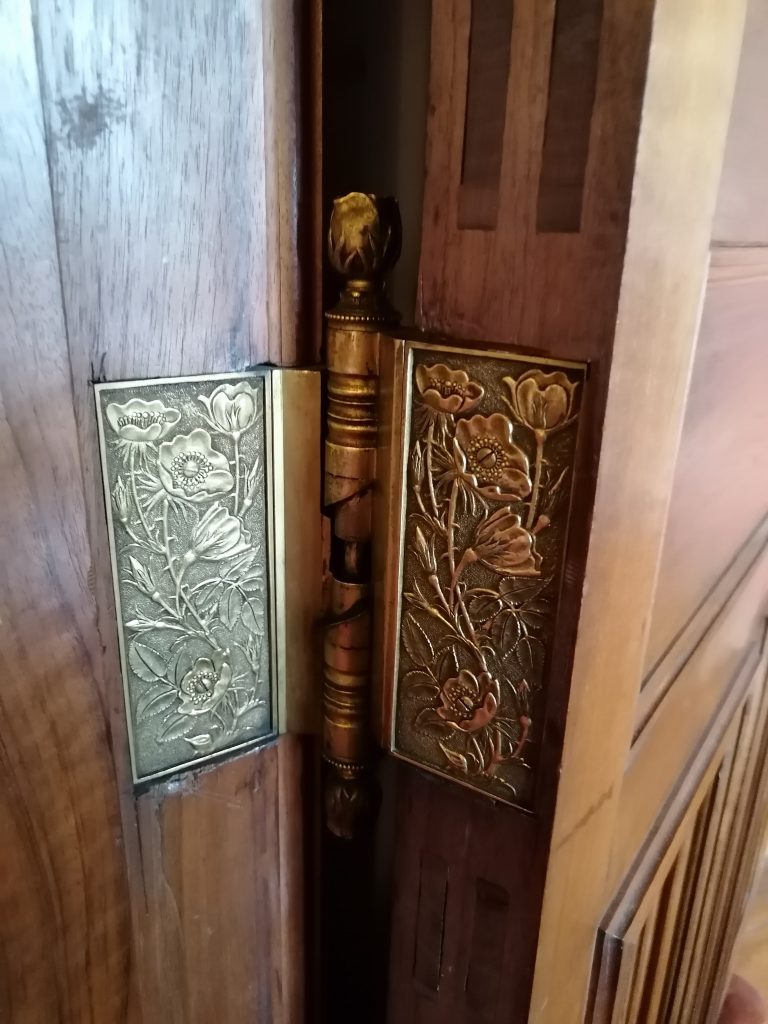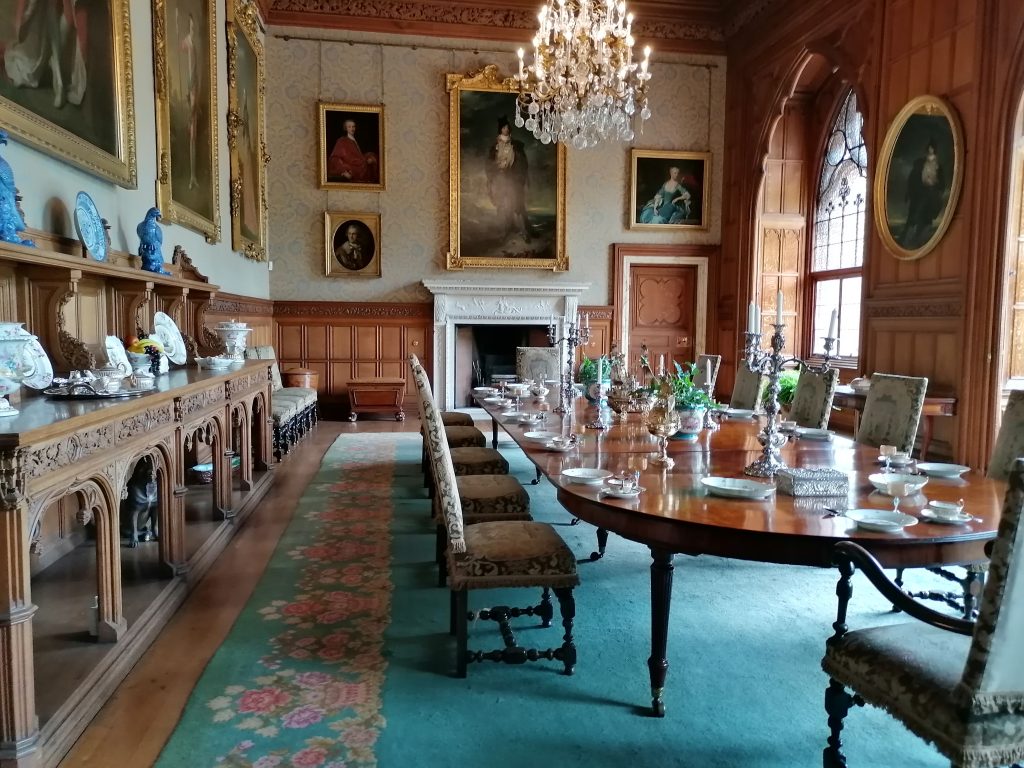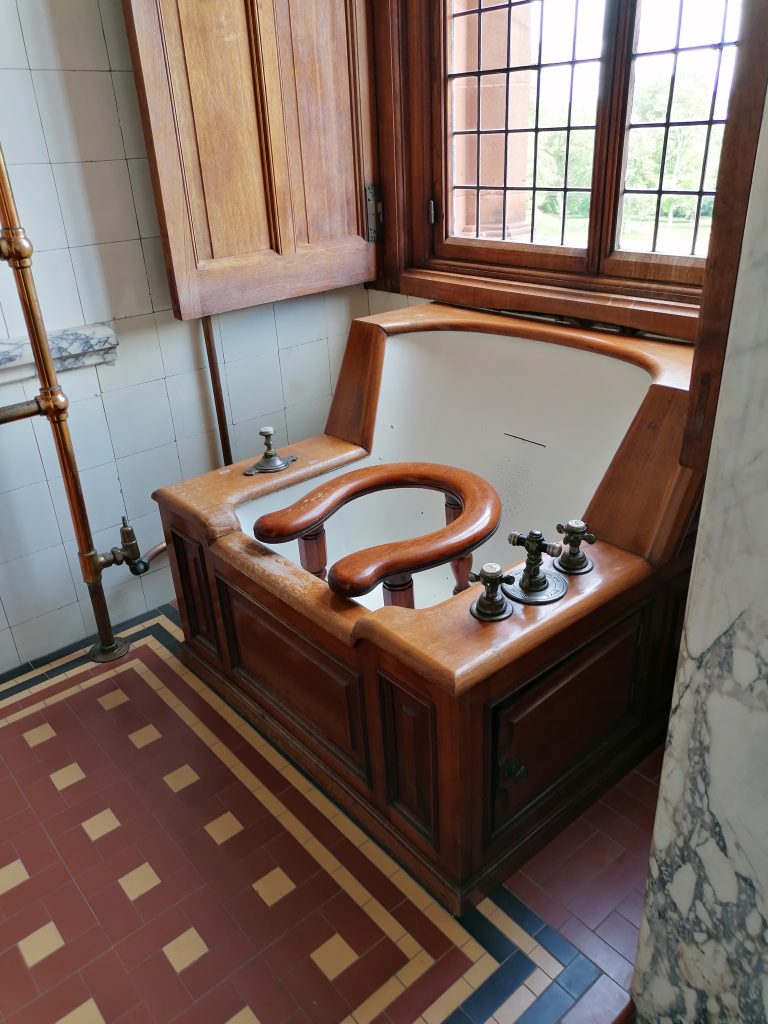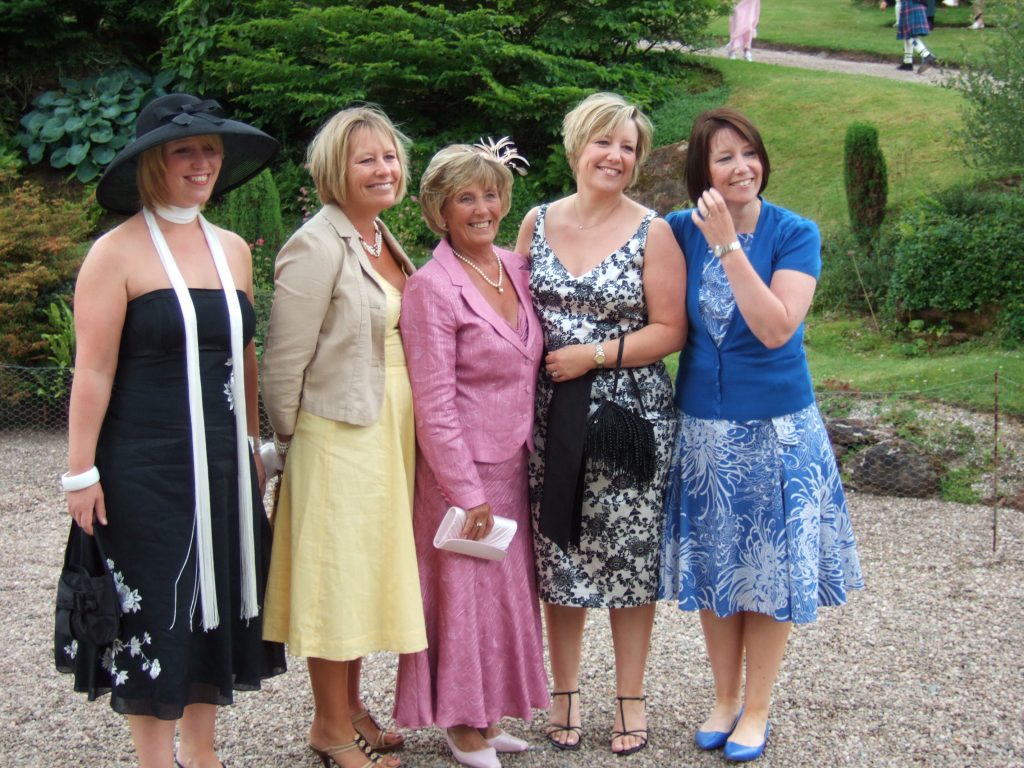
I have been visiting the Isle of Bute all my life on family holidays, and as you’ll know if you follow this blog, I am still a regular visitor there to visit family. My latest trip coincided with the Glasgow Fair holiday, when traditionally hordes of Weegies go ‘Doon the Watter’ for a break – something Innes, hero of Strangers at the Altar capitalised on.
I ‘collect’ locations wherever I go. A visit to Bute Victorian Fernery a few years ago ended up featuring in The Earl Who Sees Her Beauty. The last time I visited Mount Stuart was to attend my brother’s wedding, and I have been thinking for quite a while now that the house and gardens would make a fabulous location for a story so, along with my mum and armed with a picnic, I went back to take a fresh look.

Mount Stuart is the ancestral home of the Marquess of Bute. The original house on the site burned down in 1877and it was the third Marquess, one of the richest men in the country at the time, who is responsible for today’s Gothic palace. (The same man is also responsible for the extensive renovations at another of his houses, Cardiff Castle, and if you’ve visited, you’ll see the two have a great deal in common.)

Lord Bute worked with architect Sir Robert Rowand Anderson on the new Mount Stuart, having decided against trying to rebuild the house that was burnt down. The main body of the house is a ‘square within a square’, with the main rooms located on the elevated piano nobile, built around an utterly magnificent Great/Marble Hall. Though the tour allows you access to a significant part of the house and all the main rooms, there’s so much (as always!) that you don’t get to see -including Britain’s first private heated swimming pool in the basement. The marquess’s wealth allowed him to have a telephone cable installed and to have electric lights in every room installed as part of the original plan – not bad, considering we’re talking the end of the Nineteenth Century.
A railway was built from the bay at nearby Kerrycroy to transport the building materials, and when the house became a naval hospital during WWI, it was used for transporting soldiers. It was the fourth marquess who gave the house into hospital service, and who disliked it so much that he offered it up for sale in 1920. Luckily there were no takers.


The third marquess’s vision was not completed when he died in 1900, and little work or conservation was done until the sixth marquess and his wife took an interest. They not only set about restoring a hundred years of damage, they employed a galaxy of contemporary artists and craftsmen to enhance and augment, adding some of the fabulous details to the panelling, doorways and fireplaces, and many of the oakleaf and acorn motifs that are a play on the symbol associated with the Stuart family. It was this sixth marquess who secured the future of the house, establishing the Trust for the building and opening it up (generating much local excitement at the time) to visitors.

If you are lucky enough to get married in the marble chapel at Mount Stuart (as my brother and Stella McCartney did – though not to each other!) you have the option to hold your reception in the Marble Hall. Here you are inducted into Lord Bute’s obsession with astronomy and astrology, with a vaulted ceiling painted with the stars of the night sky in the northern hemisphere, and the signs of the zodiac depicted in stained glass in the arched windows immediately below. So many people hurt their necks craning to see it all that they have put a chaise longue slap bang in the middle of the hall allowing visitors to gaze upwards in comfort.

Walking clockwise, you come to the dining room, one of the most traditional of the formal rooms in the house where a number of family portraits are hung around the walls and in the ante-chamber (and because this is the Bute family, we’re talking portraits by illustrious artists such as Joshua Reynolds, Allan Ramsay, Henry Raeburn).


The Drawing Room is next along, and once again it is the ceiling that takes your breath away – a heraldic family tree that you might love or hate, but that you certainly can’t ignore. The fireplace was designed around the mirror, and at some point was removed by one of the Gothic-hating marquess’s to make a gate into the ‘Wee Garden’. More of the astonishing Bute collection of art is displayed around the walls here, with Tintoretto and Titian among them, giving you an idea of just how wealthy the Bute’s were. There are some rooms in some stately homes that make me itch to dance a waltz in them – this was definitely one of them – and in fact on my very first visit here, with my dance partner and BFF Peter, I seem to recall that we attempted one.



The Purple Library is one of three connecting libraries (Blue, Red and Purple) in Mount Stuart and it is one of the few rooms that manages to feel cosy. I wanted to snuggle down on the couch with a book, and I could easily imagine sneaking away to find sanctuary there from a big formal dinner or a ball – so watch this space for one of my heroine’s to do just that! The third Earl of Bute was a co-founder of Kew Gardens, and his collection of very rare botanical books are housed here. I was delighted to spot one of them that my Scottish herbalist heroine Allison uses in From Governess to Countess. During WWI, the Purple Library was an x-ray room, while the Dining Room, Drawing Room and Marble Hall were wards. The Conservatory upstairs off the Horoscope Room was an operating theatre. Apparently there were 2060 operations there, including 38 appendectomies, 14 amputations, 28 bones plated together and the removal of 2 testicles. I sincerely hope they weren’t all on the one patient.




The third marquess was a convert to Catholicism, but sadly he didn’t live to see the Marble Chapel completed. St Brendan is one of the saints depicted, a sea-faring saint closely associated with the Isle of Bute.
Up the marble staircase (where I posed with Baby Sis at Bros’ wedding) you get a much better view of the horoscope stained glass and it takes you a moment to work out how the optical illusion in the galleries works – mirrors, my mum and me eventually sussed. The bathrooms on display are not original, but Victorian hydropathic fittings that offer sprays, plunges, douches and whirlpool baths, are apparently still used by wedding and event guests.




The third marquess and his wife, unusually, were a happy couple who shared a bedroom, now named the Family Bedroom. There’s a very ornate ceiling and a broad decorative frieze that made the room feel very chapel-like to me, and far from restful. Lady Bute’s room was originally her sitting room, with red silk hangings that her husband claimed matched her rosy complexion. This is the plainest of the bedrooms, and actually restful! In contrast, the Horoscope Room seemed to me designed to distract you from sleep (in fact it was originally a sitting room).

The ceiling is painted with the constellation of the stars at the time of the third marquess’s birth, and this is one of the rooms that was remodelled by the sixth marquess to allow him to use Mount Stuart as a home. The bed is his, and it is gorgeous, with carvings inspired by the tales of Reynard the Fox. On the bedposts are carvings of the fox playing a psaltery to lull the marquess to sleep, and on the other side is a badger with a set of bagpipes to waken him up. Hovering above is the noble lion in a nightcap.



There is a secret passageway connecting this room to the downstairs Smoking Room that unfortunately isn’t open. Tantalisingly, there are pictures in the guide book of other closed rooms including the Henry VIII Bedroom, the Billiard Room, the Burgess Chapel and the Swimming Pool which I recall seeing in a television programme, with the historian Lucinda Lambton taking a swim around marble pillars – ‘like swimming down the aisle of a Parish Church’, she said, according to the guide book.


There are three hundred acres of gardens (perfect for wedding posing!) first planted three centuries ago and unless you take the whole day, you will only see a fraction of them.

There are three formal gardens, there’s a beach, and you can see the remains of a huge boathouse too. My mum and I had a lovely picnic in the grounds, then wandered through the Wee Garden and the Rock Garden before heading to the beach, My Fitbit was registering thousands of steps by then, so we called it a day before we made it to the Kitchen Garden.
A couple of days later, when two out of my three sisters arrived (we missed you Catriona, honest) we took a walk to Kerrycroy, the little village built by the second Marquess of Bute for his wife, to remind her of her English home – or so the story goes.

If you’ve not visited Mount Stuart before I urge you to do so, if the opportunity arises. There’s a regular open top bus tour from the town of Rothesay where the ferry comes in, and travelling from Glasgow, it makes a wonderful day out. But if you can’t make the journey and want to see more, why not hop over to Tiktok and take a look at my video of the day.

Comments
8 responses to “A Tour of Mount Stuart on the Isle of Bute”
What a wonderful place, I look forward to reading about bits that inspire you in your next book.
What a fabulous place – it looks stunning!
So glad you enjoyed it. I just have to get the right heroine for the house now.
Definitely worth a visit if you can make it.
Hello, I just finished reading Stranger’s at the Altar and have questions about the ending. Do Innes and Ainsley have a child together? If Ainsley was unable to have children why did she worry about taking precautions? I was also wondering about the stipulation in the will that she could access her trust if she had a child. Did it matter who fathered the child? It was truly heinous if her father tied her inheritance to having a child with her scapegrace husband who was already dead. Also, if Innes did not have a child would he be able to fully inherit the lands?
I did enjoy the story and look forward to the reread.
Regards,
Martha
Hi Martha,
I’m so glad you enjoyed Innes and Ainsley’s story. I left open the idea that they may have a child together simply because at the time so much was unknown about problems with conception. They took precautions because they didn’t know, and at that point in the story they weren’t married – so it would have been beyond scandalous if Ainsley then conceived. As to the will, the assumption would have been that the father was Ainsley’s husband, and if not him, then a child of a future marriage. Her father wouldn’t have put more thought into it, because it wouldn’t have occurred to him that she could have a child without a husband. As to how that would really hold up in law though, I will admit I’m not sure.
Does this help? It’s certainly made me look at the story with a fresh eye. I’d always imagined writing Felicity’s story at some point as a follow up. Maybe now I will. Happy reading!
I had always assumed that she wasn’t prepared to take the risk – for all the reasons you outlined. Unlike so many HR romance writers today, you always stay faithful to the historical realities of the time. Being pregnant and unmarried, was not the ‘judgement-free’ state that so many contemporary writers pretend it was.
On a different note, I always liked the idea that they could, and might end up pregnant, as so little was understood by medics at the time that it is entirely reasonable to think it could happen. There are many stories of a woman becoming pregnant – even after years of marriage – for it to be possible, even if it wasn’t probable. I loved this story and it remains one of my favourites to be revisited and enjoyed.
You’re right, them having a child was always a possibility, and the sort of thing I’m always happy to leave up to readers to decide – so over to you! And thank you again for the kind words, I had such fun with the agony aunt letters of that one, it’s made me want to revisit that too!